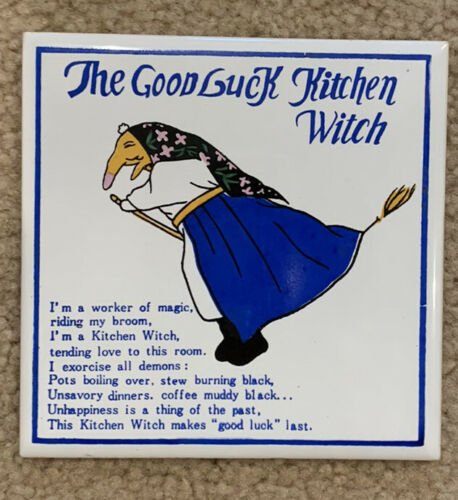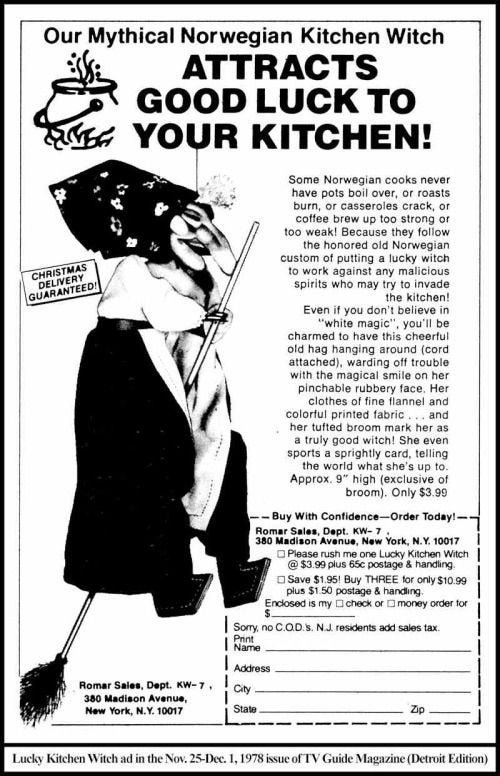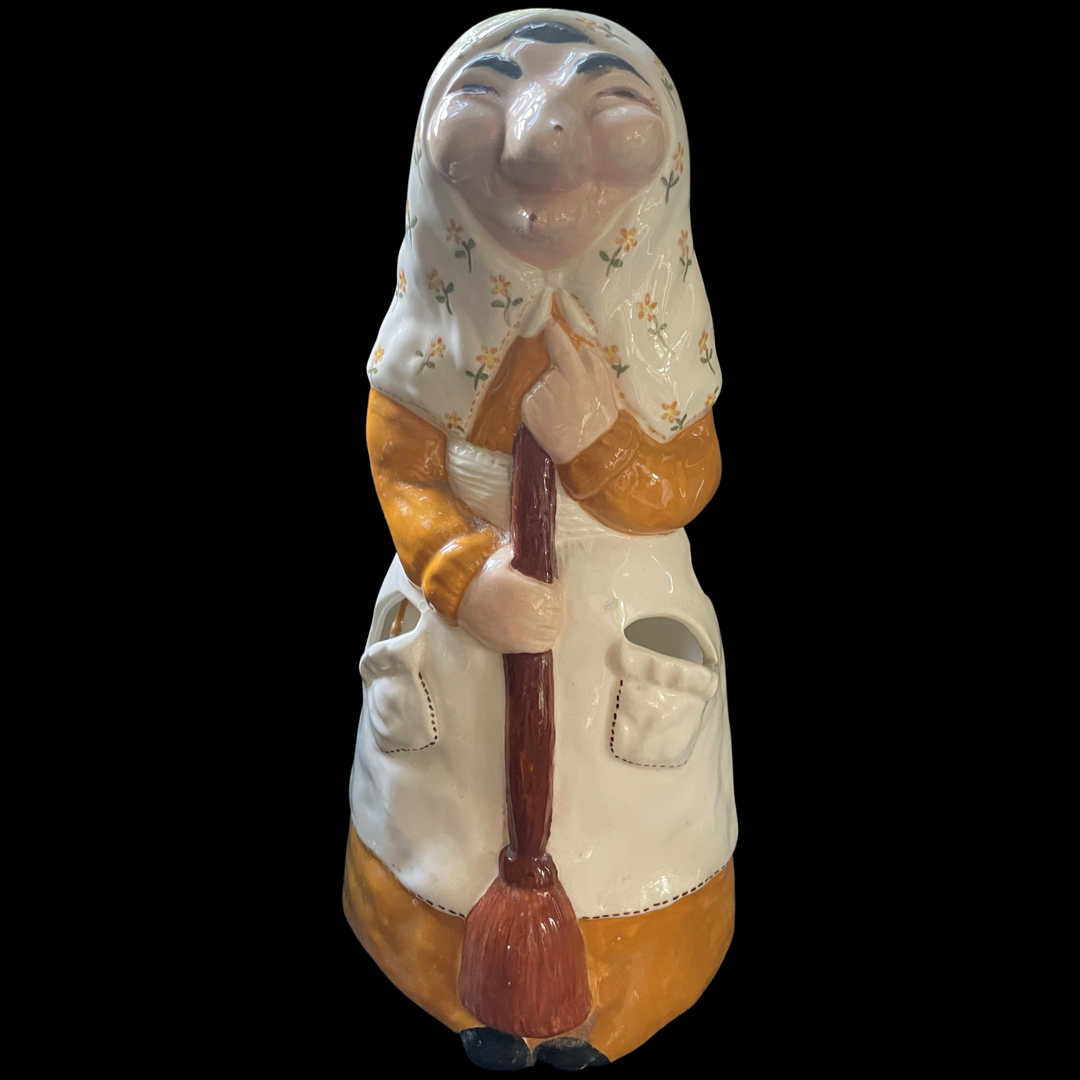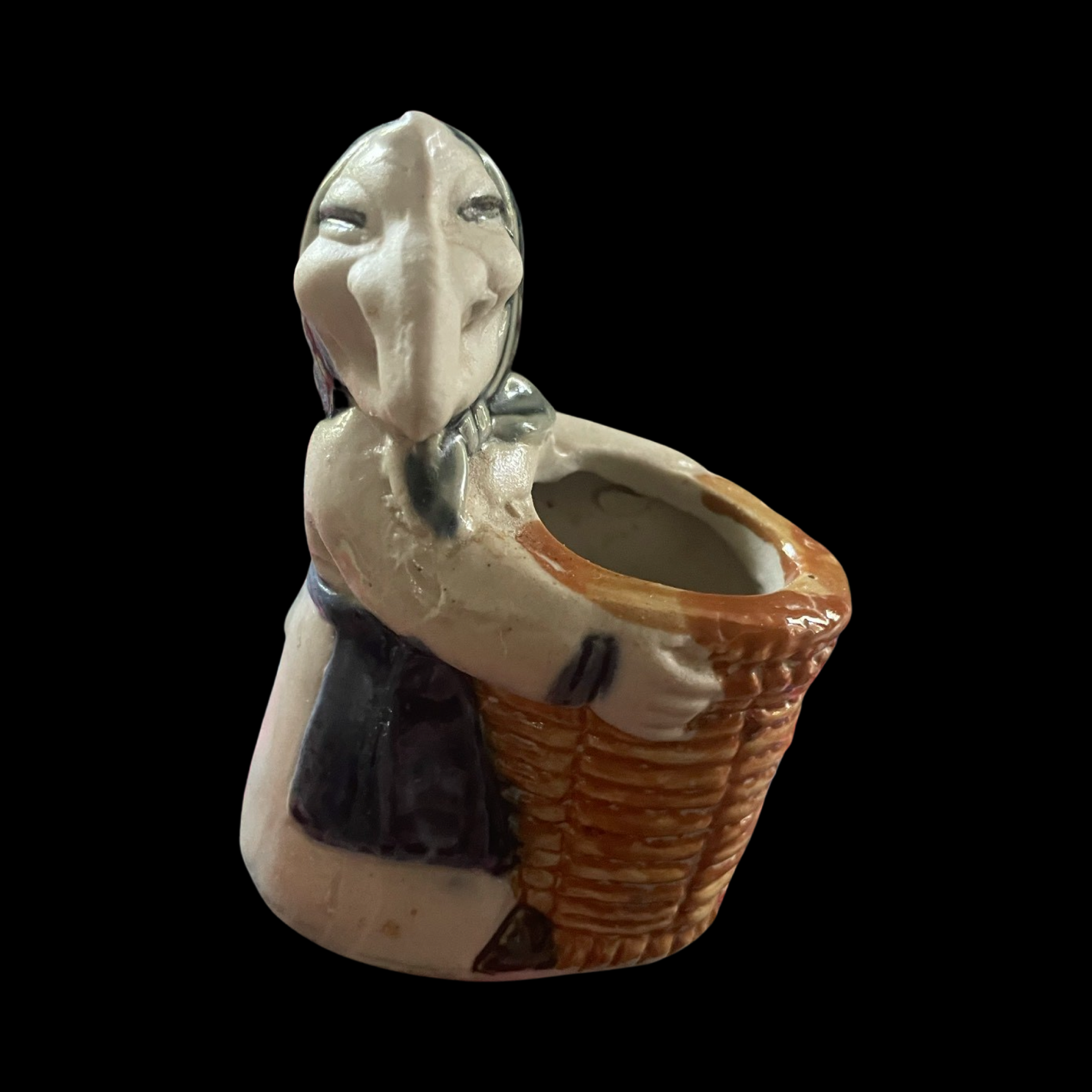Kitchen Witchery
The conventional image of a “witch” is someone — usually an old woman — who is knowledgeable about folk medicine, magic and nature. But there is another — more informal and modern — use of the word “witch” to mean someone who is so talented and skillful in the practice of a craft that the outcomes can only be the result of magic.
The House first encountered this usage at the local pizzeria, which is run by a self-proclaimed “Pizza Witch,” who shoves dough into a wood-burning oven and extracts wonderfully crisp and delicious pizzas a few minutes later. Similarly, a “Water Witch” has the amazing ability to locate underground water with a dowsing rod.
Which brings us to the Kitchen Witch…
Kitchen Witchery refers to the rituals and magical practices that take place around the hearth during the preparation of food.
A “Kitchen Witch” is a helper who brings good fortune to one’s culinary endeavors and prevents kitchen mishaps from occurring. Kitchen Witches are a Northern European tradition that dates back centuries. Kitchen Witches probably had their cultural moment in the late 20th century when they were a popular motif for all manner of kitchen implements such as salt and pepper shakers, tea towels, trivets and crocks. Below is an advertisement for a mail-order kitchen witch who is described as a “cheerful old hag.”
Explanatory poems like these frequently accompany the Kitchen Witch:
The Good Luck Kitchen Witch
I’m a worker of magic, riding my broom
I’m a kitchen witch, tending love to this room.
I exorcise all demons: pots boiling over, stew burning black,
Unsavory dinners, coffee muddy black…
Unhappiness is a thing of the past.
This kitchen witch makes “good luck” last.
Another poem:
Nothing spills; nothing spoils; overcooks, overboils; This Kitchen Witch upon her broom brings love and luck to any room.
According the Museum of Witchcraft and Magic, most homes in Germany have a “house witch” to bring them good luck, often with a small coin sewn into the witch's pocket. Some homes have both a large “house witch” and a small “kitchen witch”. Many supermarkets sell them.
Perhaps the most famous and accessible version of a “Kitchen Witch” is Strega Nona, the beloved title character of a delightful children’s book about a “Grandma Witch” who floods a Calabrian village with pasta from her magic pot.
You may occasionally encounter Kitchen Witches who are described as “Baba Yaga” or even “La Befana,” but these characters can be distinguished from true Kitchen Witches. The former is a Slavic ogress who lives in a forest hut on raised chicken legs and eats children; while the latter is an Italian Christmas Witch who brings treats to children on the eve of the Epiphany.
If any of The House’s dear readers wish to acquire their own custom Kitchen Witch, The House recommends following Instagram account: @witchesforkitchens
Contemporary Kitchen Witch crafted by @witchesforkitchens (Instagram)
Advertisement for a “Mythical Norwegian Kitchen Witch”
Kitchen Witch Salt & Pepper Shakers
Illustration from Strega Nona
Tag on Scandinavian “Health & Happiness Kitchen Witch”
Kitchen Witch Salt & Pepper Shakers, House of Good Fortune Collection.
This vintage Kitchen Witch is identical to the one in The House’s grandmother’s kitchen.
Tea towel for sale in the gift shop of the Salem Witchcraft Museum.
Kitchen Witch Salt & Pepper Shakers
Kitchen Witch Utensil Holder that bears an uncanny resemblance to Strega Nona, House of Good Fortune Collection
Kitchen Witch Utensil Holder (side view), House of Good Fortune Collection
Kitchen Witch toothpick holder, House of Good Fortune Collection.
Read more about Witch Bottles and Witch Balls…















